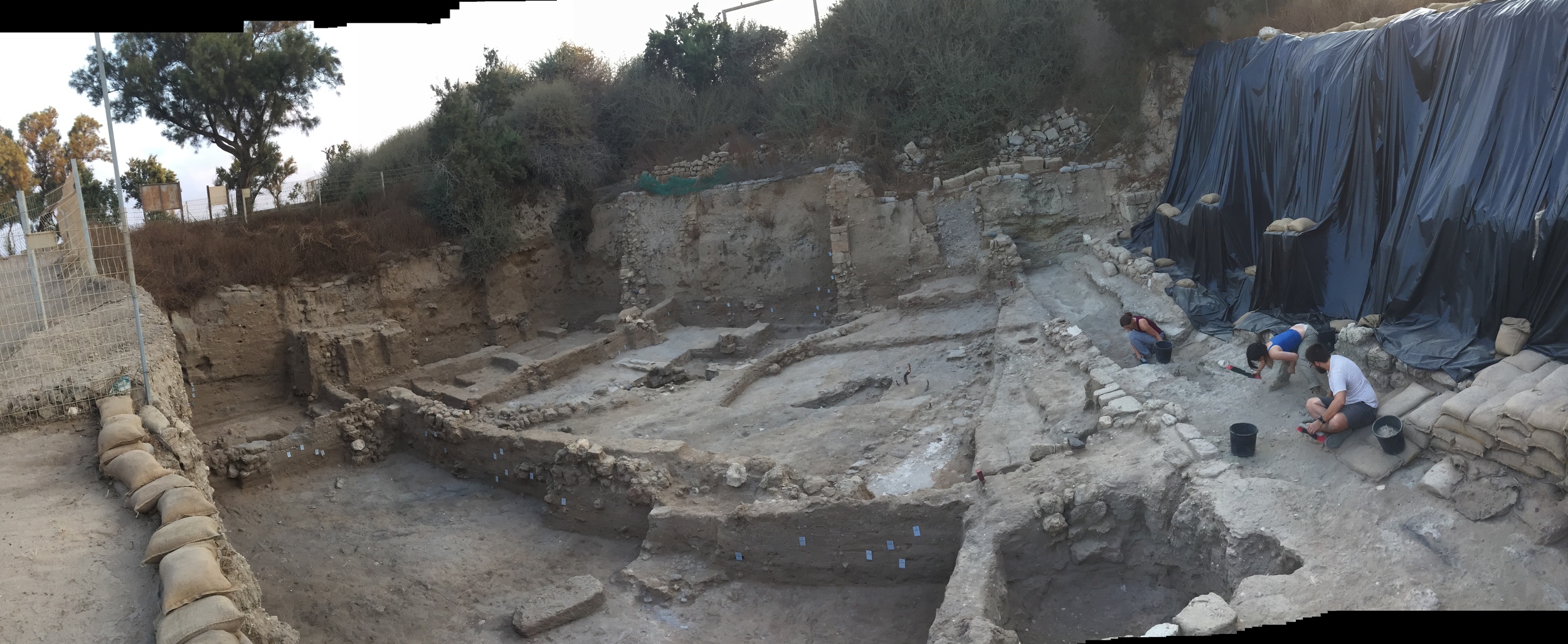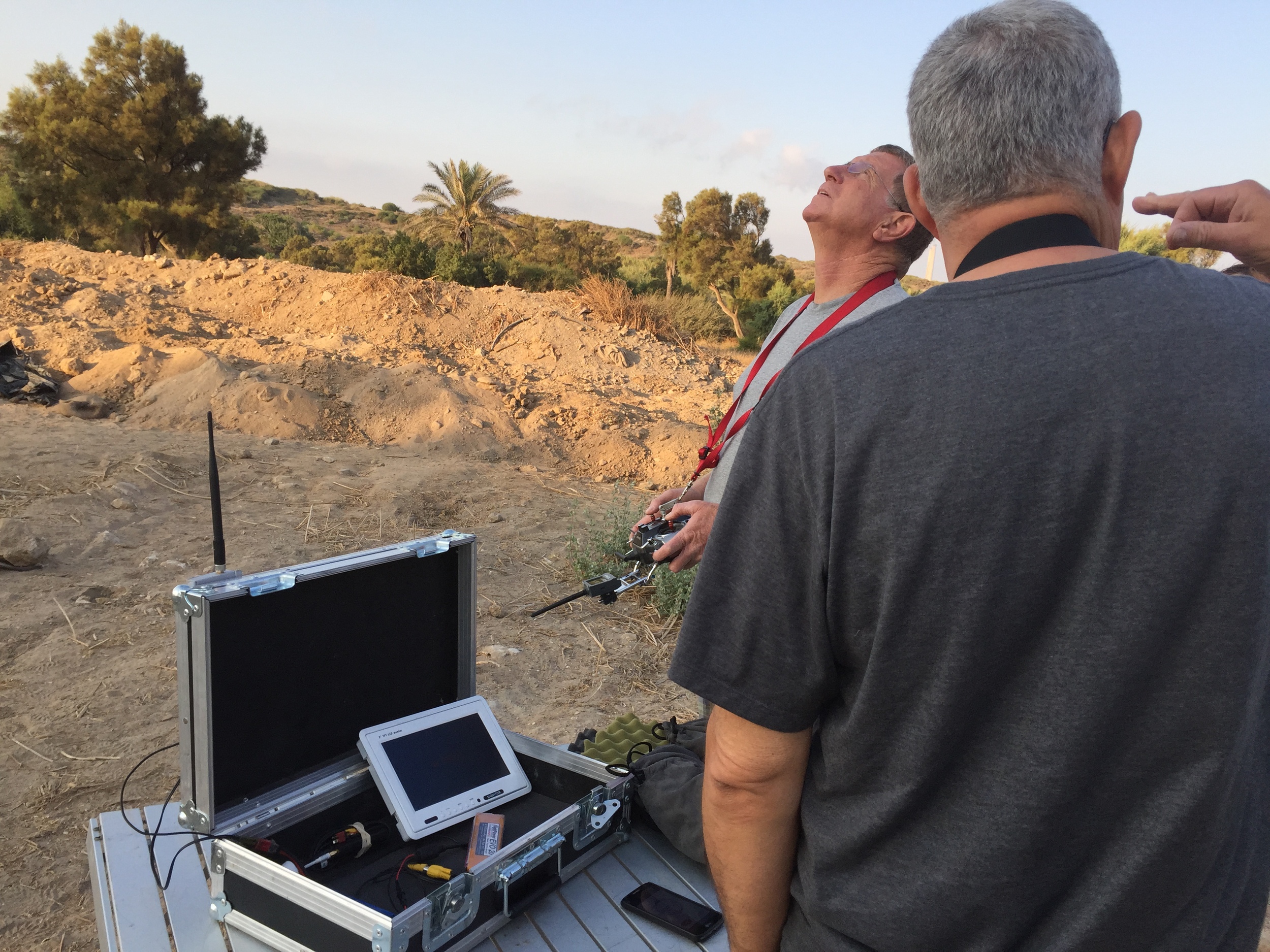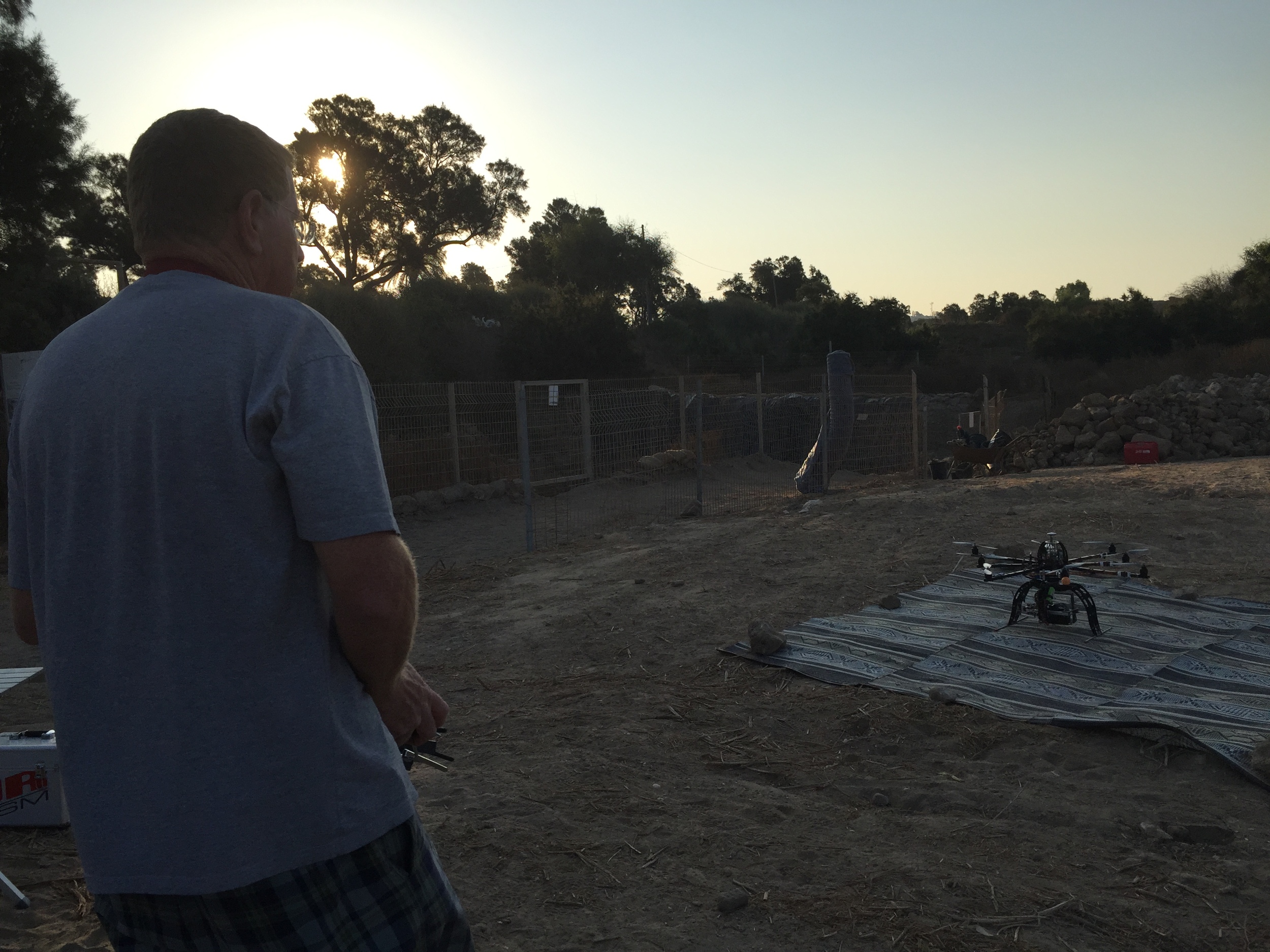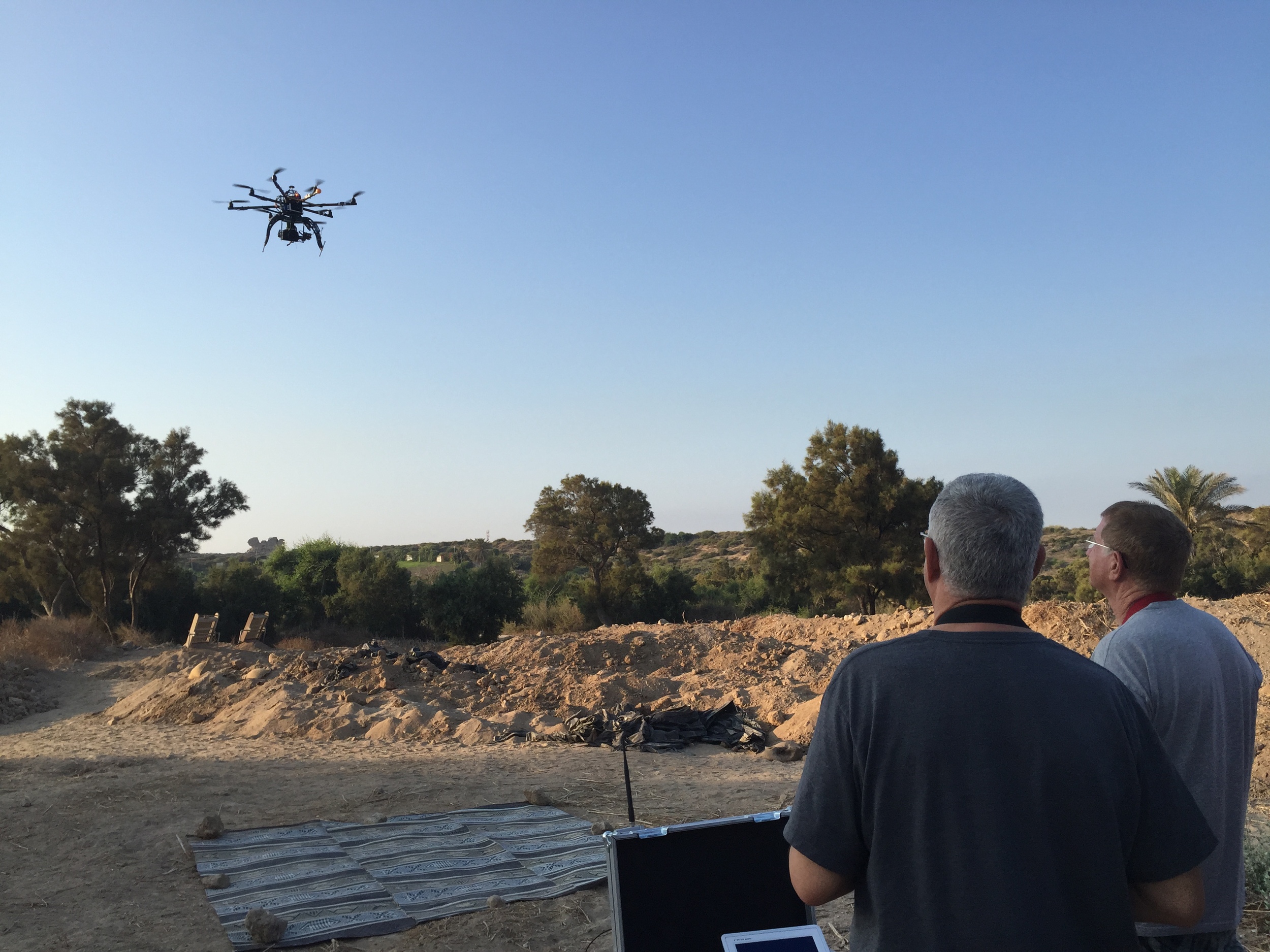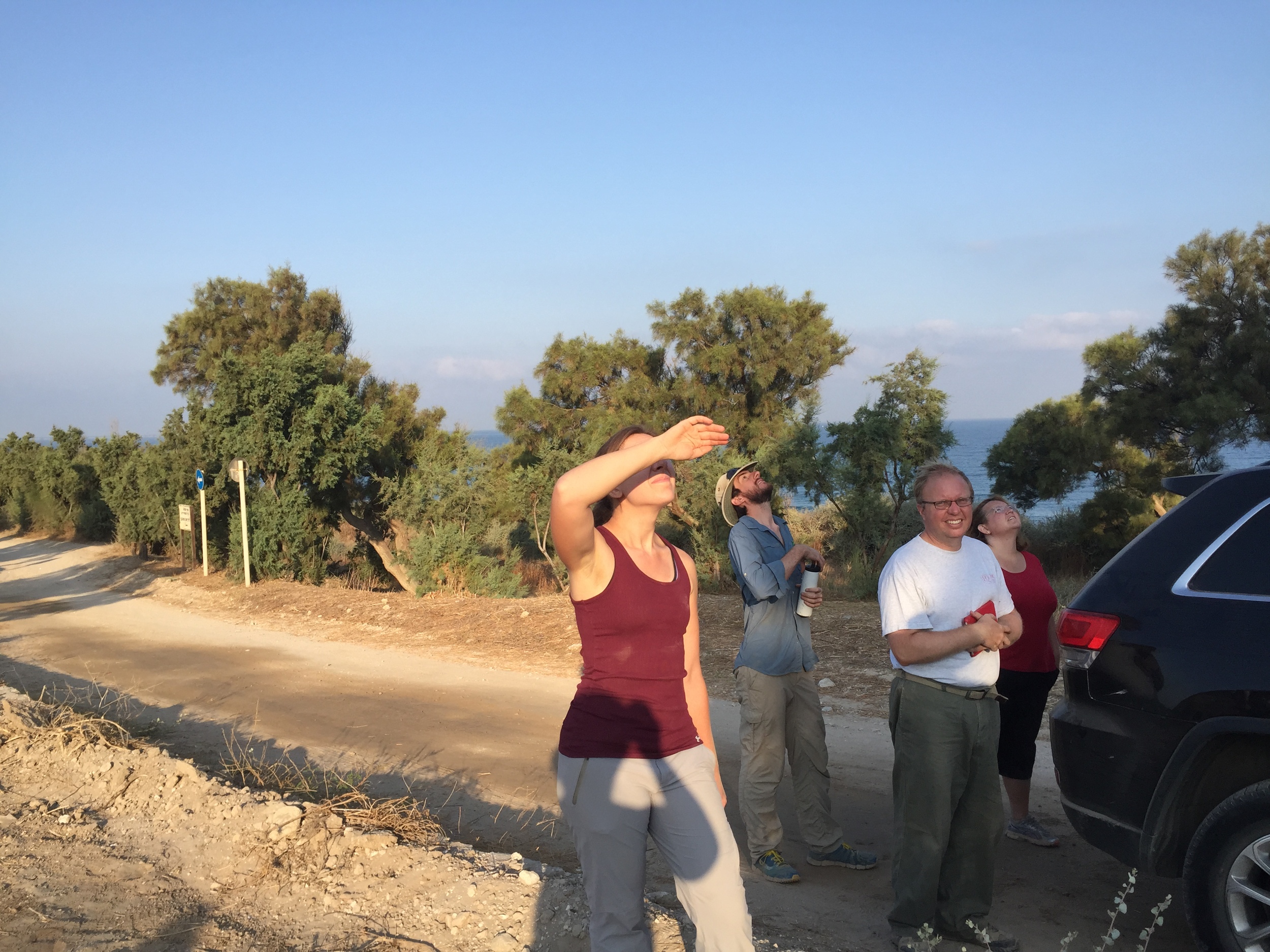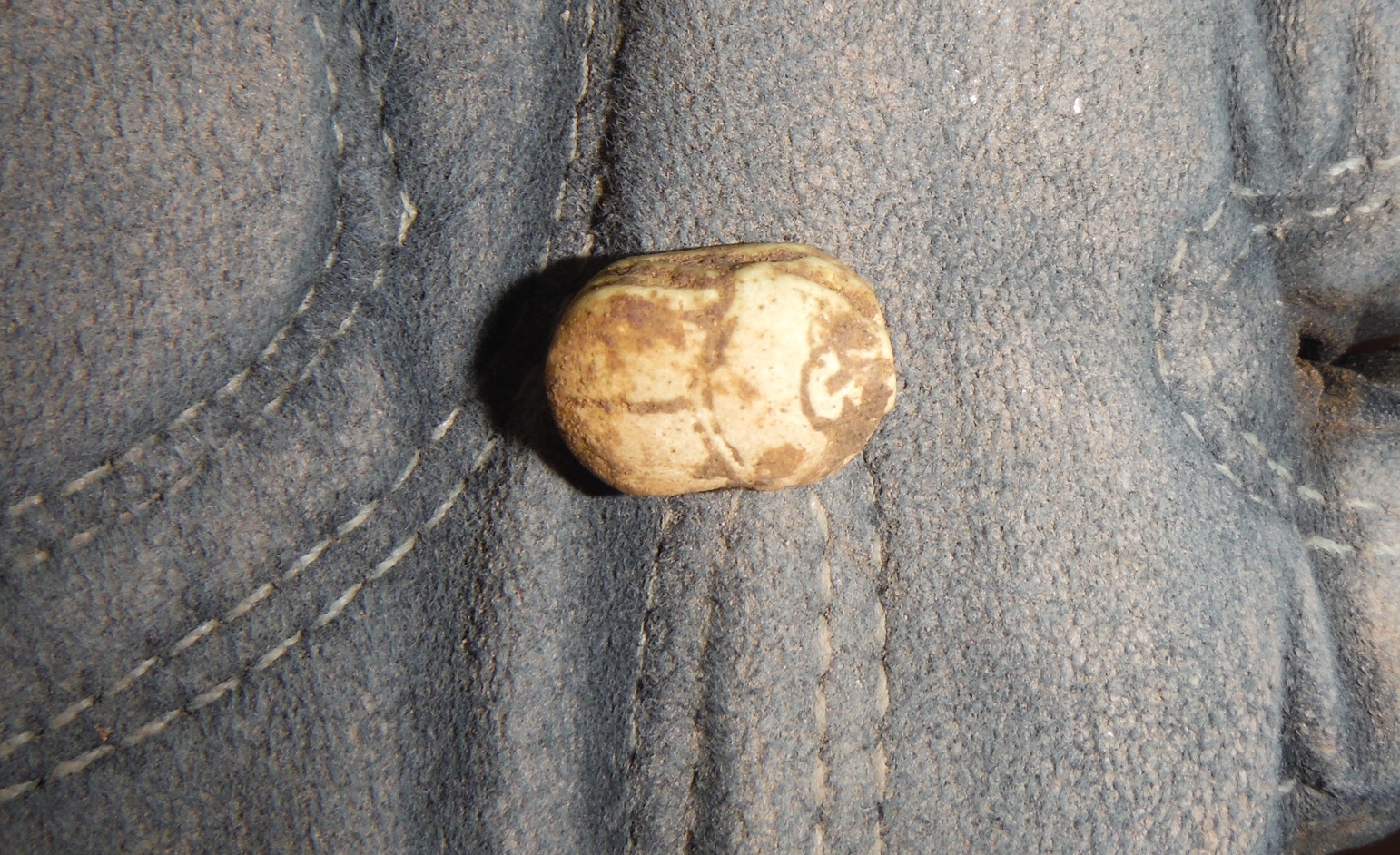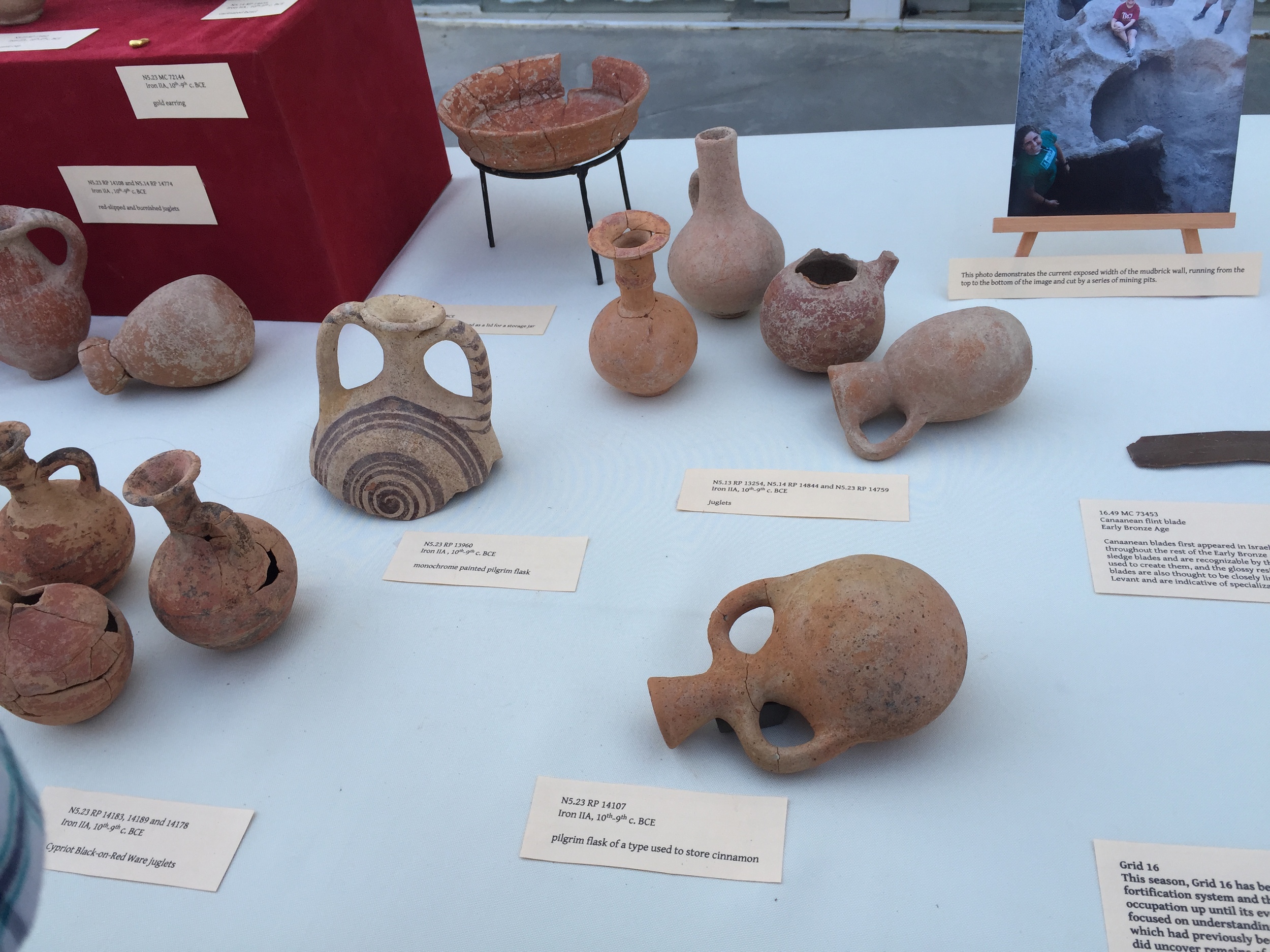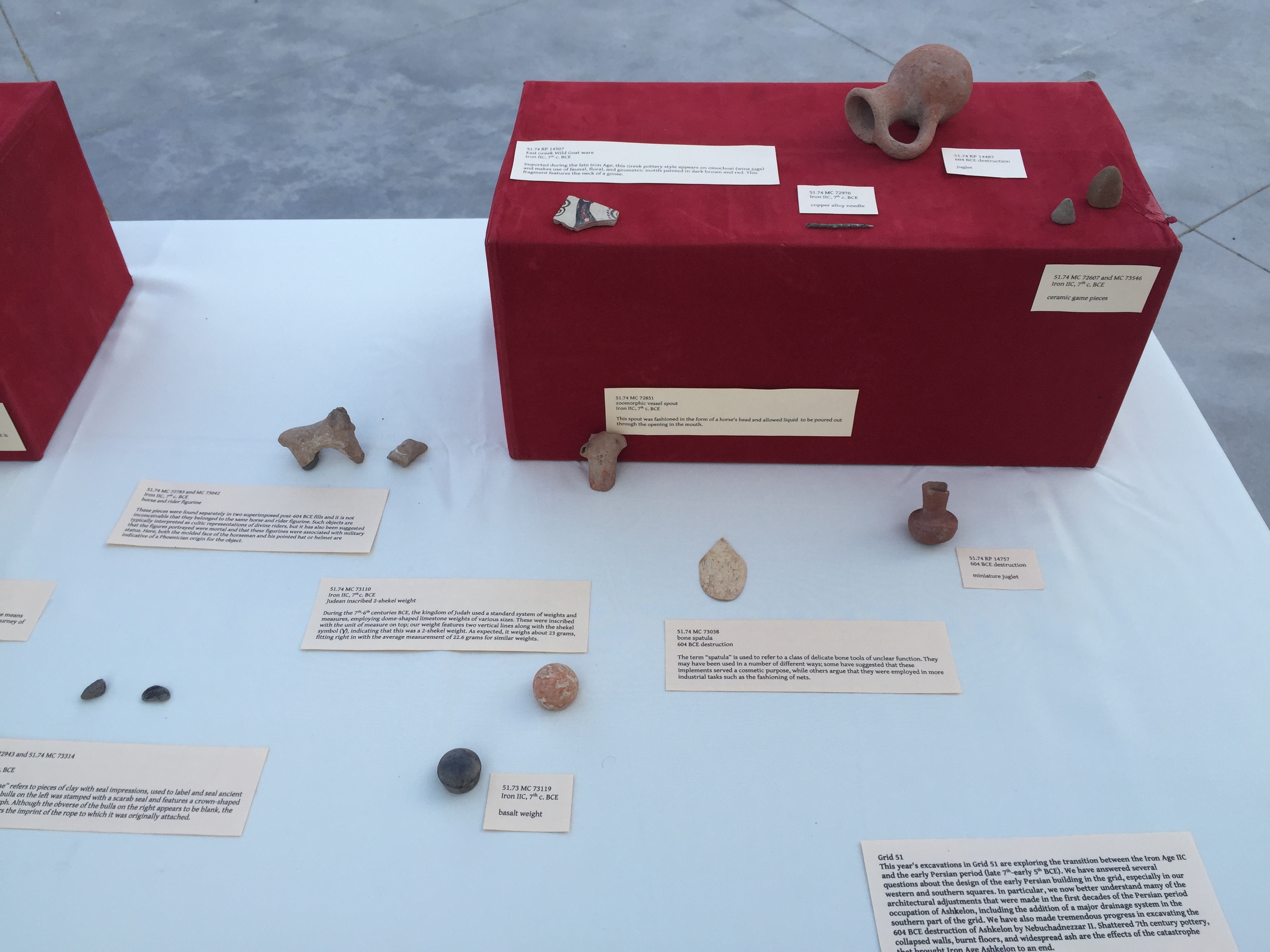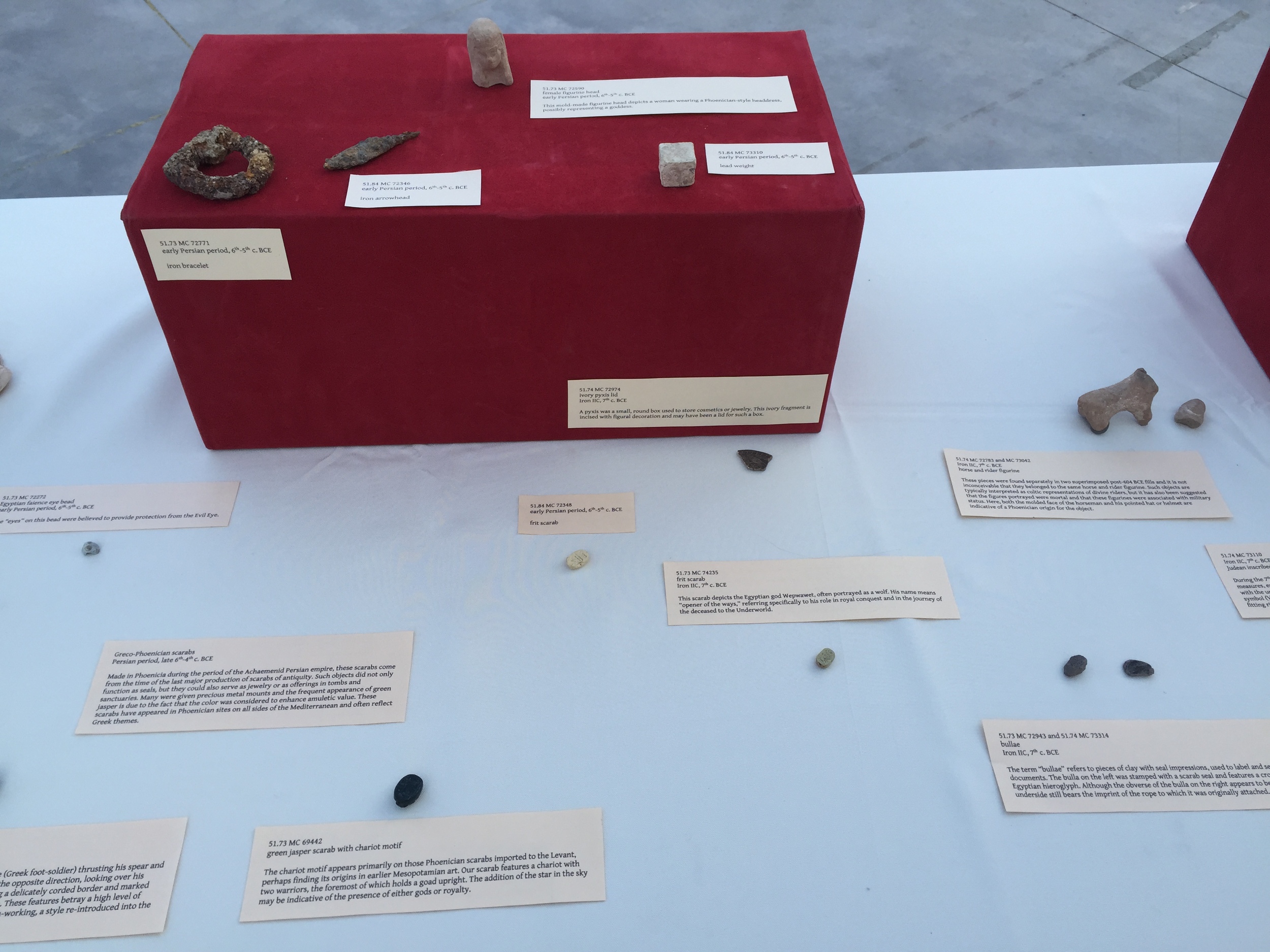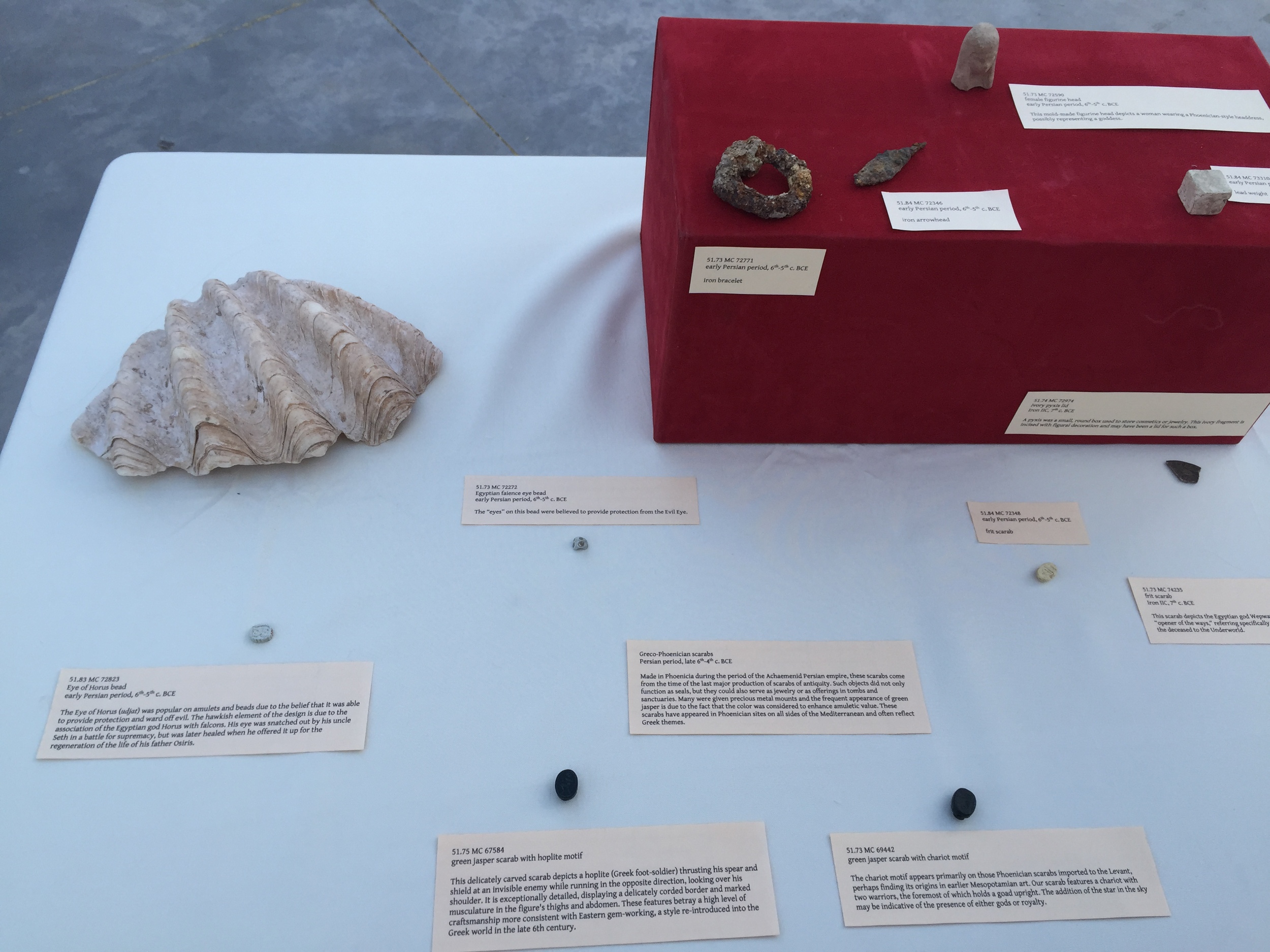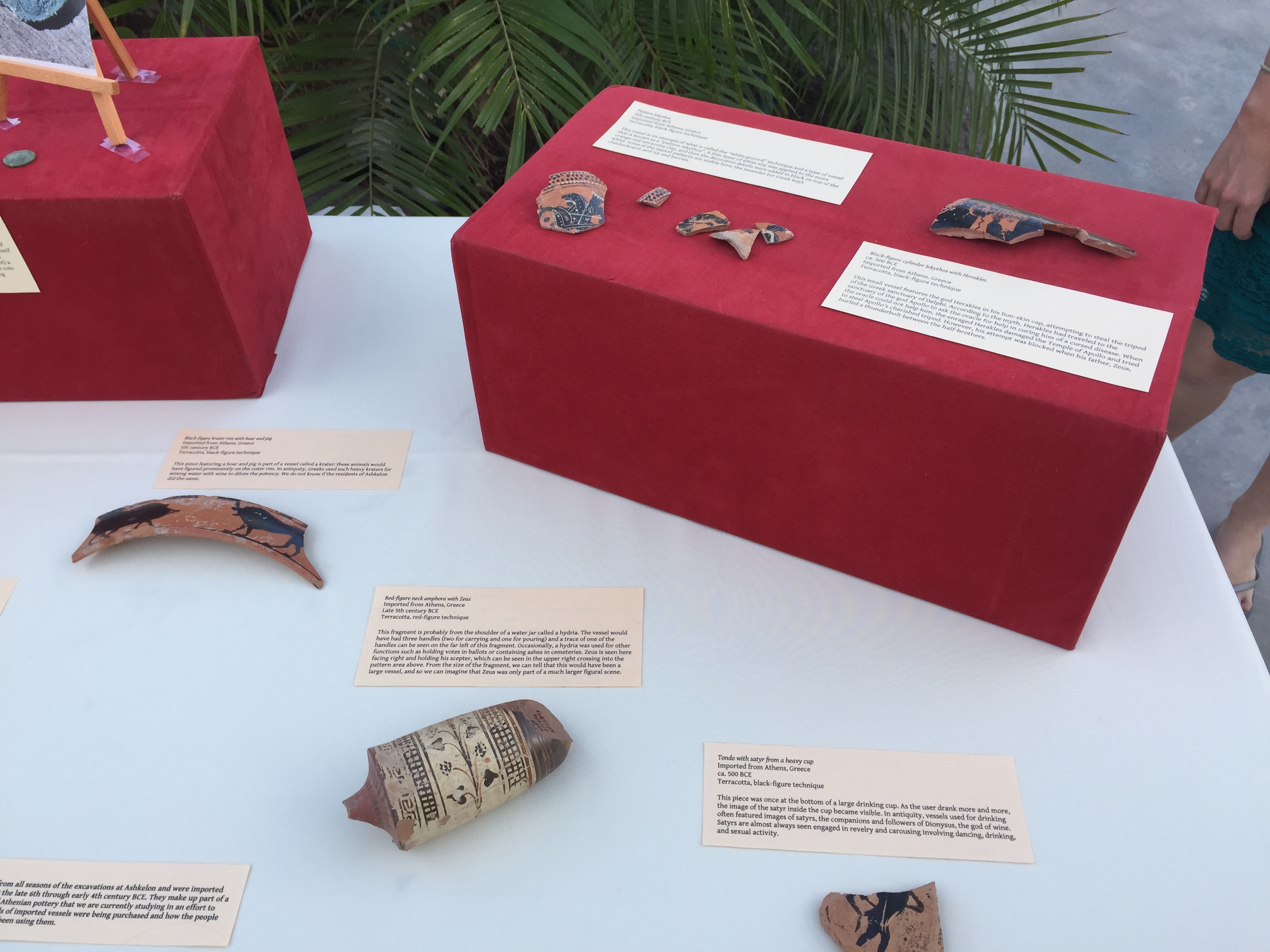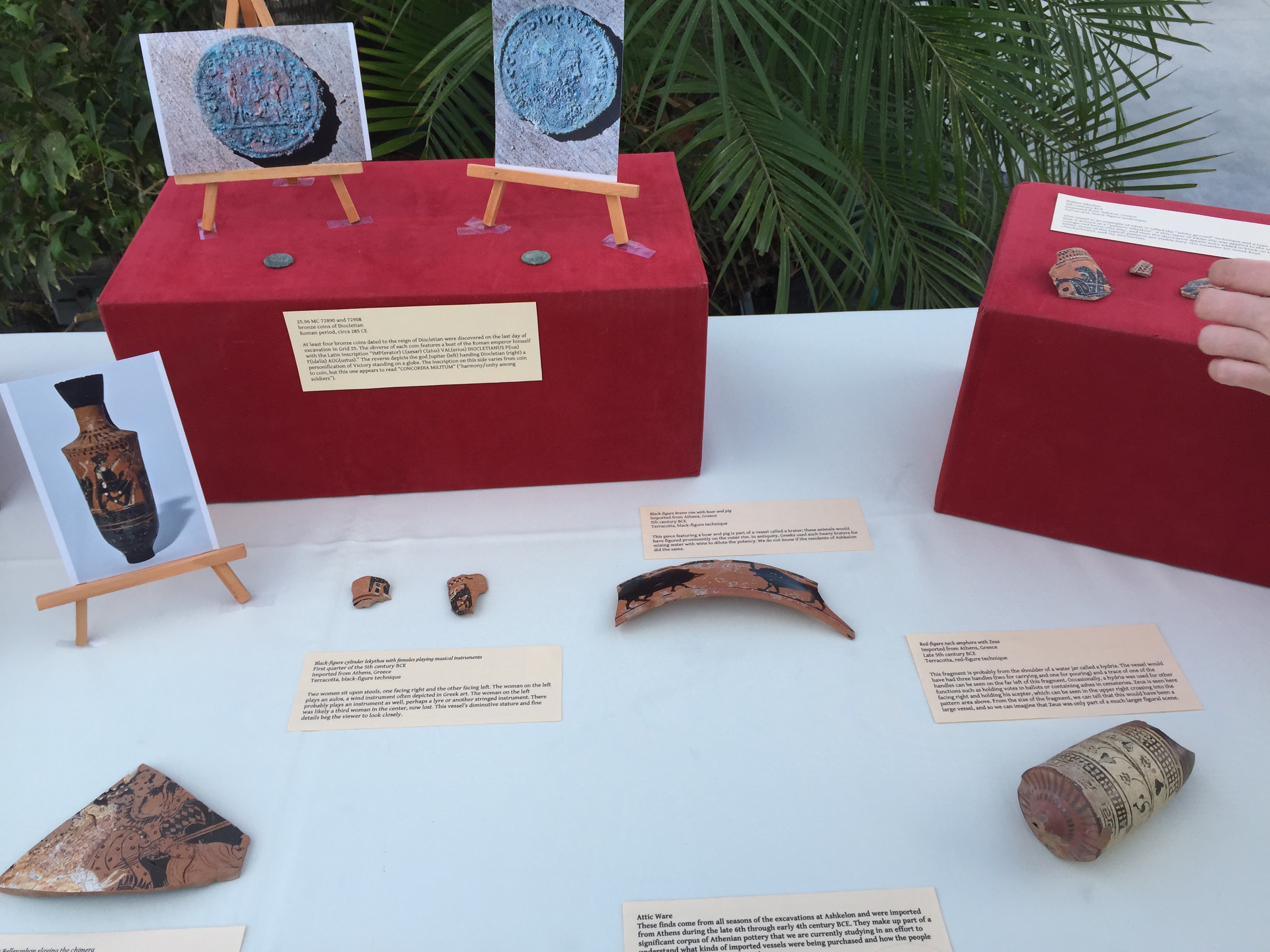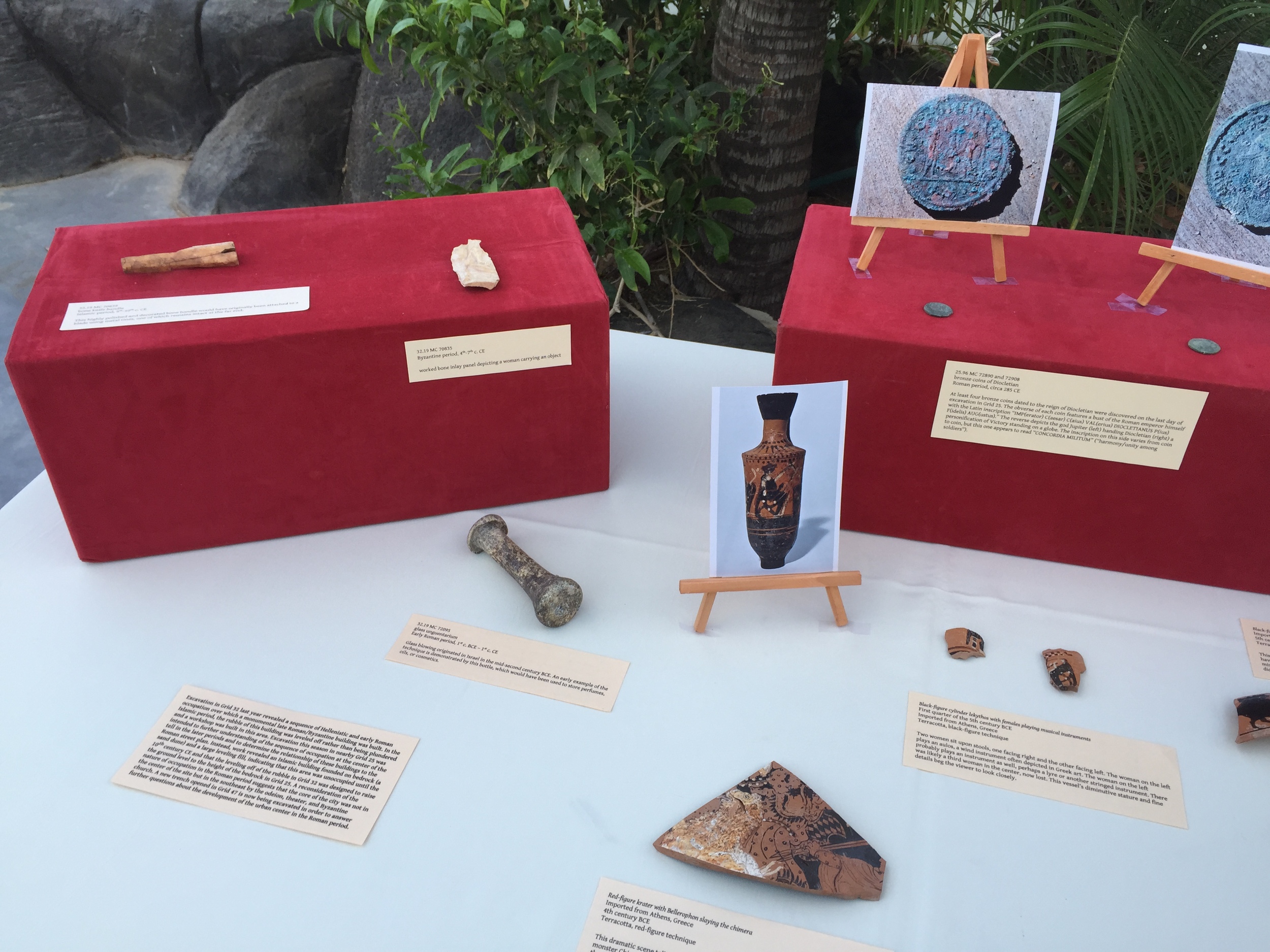Well, the 2015 season has come to an end. We did our final sweep this morning, then had a drone come out to take aerial shots of the different areas to publish the work that we did this year. Next, we put plastic and insulation over our more delicate areas and deconstructed the sandbag staircase that led us in/out of the grid and finished up some last minute jobs.
These past 2 years have been such an amazing experience and I'm so glad that I had the chance to be part of it! Thank you to the Leon Levy Foundation, Shelby White, and Daniel Master who let me tag along.
Check out the pictures below of the drone over 51 and the final shots of our grid. Until next summer!


